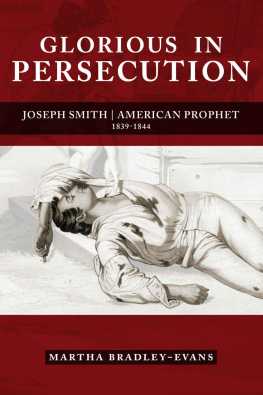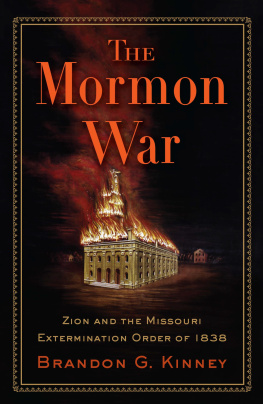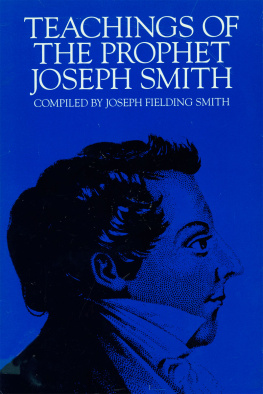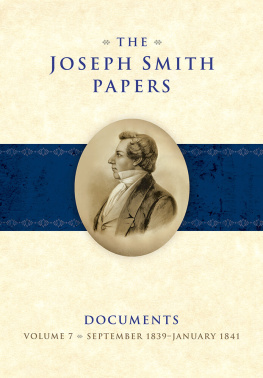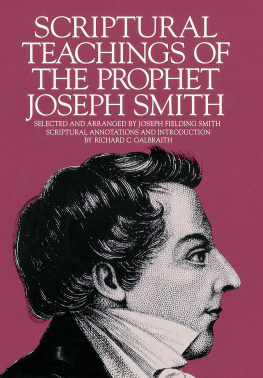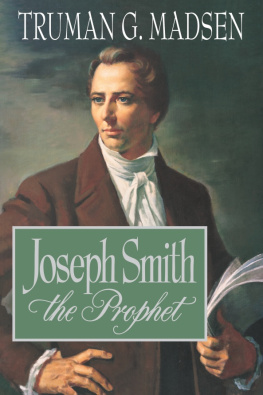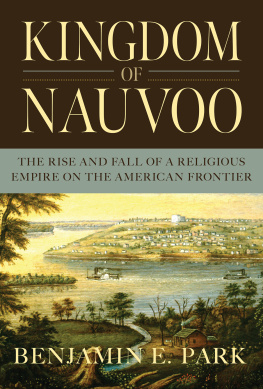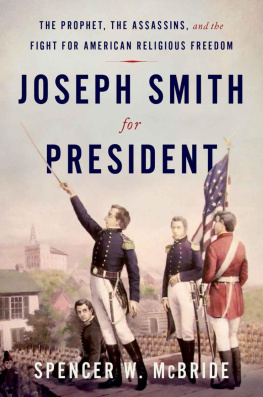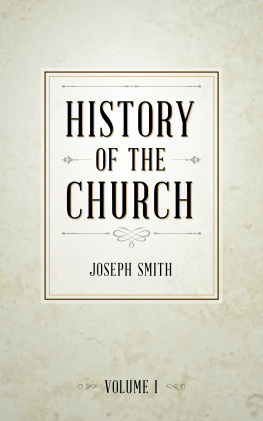Martha S. Bradley-Evans - Glorious in Persecution: Joseph Smith, American Prophet, 1839-1844
Here you can read online Martha S. Bradley-Evans - Glorious in Persecution: Joseph Smith, American Prophet, 1839-1844 full text of the book (entire story) in english for free. Download pdf and epub, get meaning, cover and reviews about this ebook. year: 2016, publisher: Smith-Pettit Foundation, genre: Religion. Description of the work, (preface) as well as reviews are available. Best literature library LitArk.com created for fans of good reading and offers a wide selection of genres:
Romance novel
Science fiction
Adventure
Detective
Science
History
Home and family
Prose
Art
Politics
Computer
Non-fiction
Religion
Business
Children
Humor
Choose a favorite category and find really read worthwhile books. Enjoy immersion in the world of imagination, feel the emotions of the characters or learn something new for yourself, make an fascinating discovery.
- Book:Glorious in Persecution: Joseph Smith, American Prophet, 1839-1844
- Author:
- Publisher:Smith-Pettit Foundation
- Genre:
- Year:2016
- Rating:5 / 5
- Favourites:Add to favourites
- Your mark:
Glorious in Persecution: Joseph Smith, American Prophet, 1839-1844: summary, description and annotation
We offer to read an annotation, description, summary or preface (depends on what the author of the book "Glorious in Persecution: Joseph Smith, American Prophet, 1839-1844" wrote himself). If you haven't found the necessary information about the book — write in the comments, we will try to find it.
For Smith, Nauvoo was the new epicenter of the Mormon universe: the gathering place for Latter-day Saints worldwide; the location of a modern-day Zion; the stage upon which his esoteric teachings, including plural marriage and secret temple ceremonies, played out; and the locus of a theocracy whose legal underpinnings would be condemned by outsiders as an attack on American pluralism.
In Nauvoo, Smith created a proto-utopian society built upon continuing revelation; established a civil government that blurred the lines among executive, legislative, and legal branches; introduced doctrines that promised glimpses of heaven on earth; centralized secular and spiritual authority in fiercely loyal groups of men and women; insulated himself against legal harassment through creative interpretations of Nauvoos founding charter; embarked upon a daring run at the U.S. presidency; and pursued a vendetta against dissidents that lead eventually to his violent death in 1844.
The common thread running through the final years of Smiths tumultuous life, according to prize-winning historian and biographer, Martha Bradley-Evans, is his story of prophethood and persecution. Smiths repeated battles with the forces of evilpast controversies transformed into mythic narratives of triumphant as well as present skirmishes with courts, politicians, and apostatesinformed Smiths construction of self and chronicle of innocent suffering.
Joseph found religious and apocalyptic significance in every offense and persecutionactual or imagined, writes Bradley-Evans, and wove these slights into his prophet-narrative. Insults became badges of honor, confirmation that his life was playing out on a mythic stage of opposition. By the time Joseph led his people to Illinois, he had lived with the adulation of followers and the vilification of enemies for more than a decade. Josephs worst challenges often proved to be his greatest triumphs. He forged devotion through disaster, faith through depression. Joseph interpreted each new event as Gods will set against manifestations of evil opposed to the restoration of all things.
Bradley-Evans ground-breaking portrait of Smith goes farther than any previous biography in explaining the Mormon prophet and the mystery of his appeal.
Martha S. Bradley-Evans: author's other books
Who wrote Glorious in Persecution: Joseph Smith, American Prophet, 1839-1844? Find out the surname, the name of the author of the book and a list of all author's works by series.

